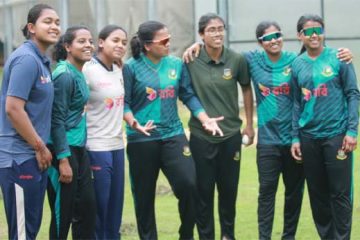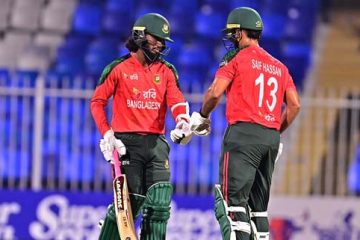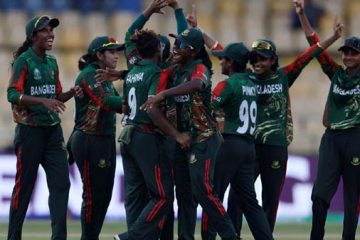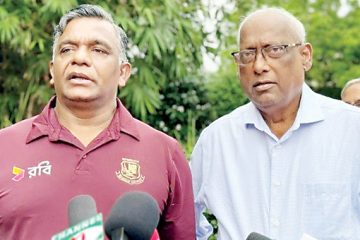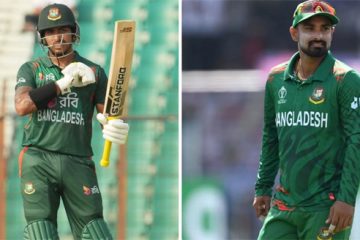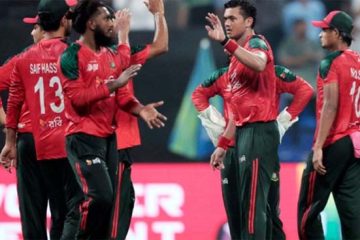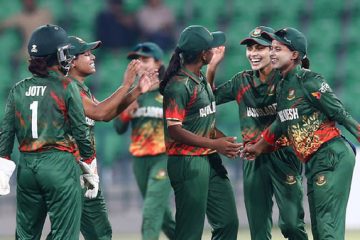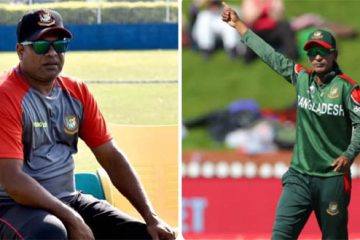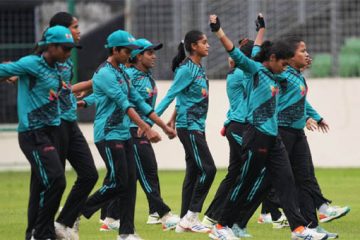With the conclusion of a successful home series against New Zealand, the Bangladesh national cricket team’s 2013 comes to a close and the nation’s cricket community can reflect upon what has arguably been the side’s finest year to date. Despite what seems like an ever-shrinking international cricket fixture schedule, the Tigers produced a number of memorable highlights en route to their most successful year, with competition only coming from 2009, when they feasted upon a second-string West Indies team and Zimbabwe.
Bangladesh played just six Tests, nine one-day internationals and four Twenty20s in 2013, the second successive year in which they played a single-digit number of ODIs. It was also, however, the second straight year in which they won more ODIs than they lost, compiling a record of five wins, three losses and one no-result following 2012’s 5-4 record.
Bangladesh played a three-match series in Sri Lanka in March, with one match abandoned due to rain, and won just one of three matches in Zimbabwe in April to go into their final series of the year – at home against the Black Caps – with a losing record.
They would, however, go on to decisively sweep all three ODIs against the tourists to finish with a 62% win-percentage on the year.
Only twice have the Tigers produced a better winning percentage in ODIS in a calendar year: in 2006, when they won 18 games – but only one against a Test-playing nation – and lost 10; and in 2009, when they again beat the then non-Test-playing Zimbabwe ten times and swept a West Indies side crippled by a players’ strike 3-0 to finish the year with 14 wins and five losses.
In contrast, every single one of Bangladesh’s international matches this year has been against a Test nation.
The Tigers also made great strides in the Test arena, winning one match, losing two and playing out three draws for by far their best record in a year if one excludes 2009, which featured a two-Test sweep against the aforementioned second-string West Indies.
After losing 13 Test matches and drawing just one from 2010-2012, Bangladesh began the year with a resounding indication that this year would be different when they played Sri Lanka to a draw in the first Test at Galle from March 8-12.
In that match, Bangladesh took a first innings lead on an exceptional batting wicket, scoring 638 runs – their best ever total in a Test match innings – on the strength of 100 from Nasir Hossain, 190 from Mohammed Ashraful and Bangladesh’s first ever double-hundred from captain Mushfiqur Rahim, who scored 200 on the nose.
The Tigers would go on to lose the second Test and face further disappointment, losing the first Test in Zimbabwe in April, before finally breaking their almost four-year Test duck. They would not lose another Test in 2013.
Bangladesh’s victory against Zimbabwe in the second Test in Harare from April 25-29 this year was their first since the July 2009 West Indies tour, and they followed it up with two creditable home draws against New Zealand – matches in which the hosts looked at times to be firmly on top.
Further progress was not as evident in the Tigers’ T20 record in 2013, which saw them win just one of the four matches they played. They could, however, take solace in knowing they were in the hunt in every match and had to contend with key absences in the game’s most volatile format.
Perhaps most encouragingly, much of Bangladesh’s success this year came on the strength of a number of outstanding performances from players outside the Sakib-Tamim-Mushfiq triumvirate, which bodes well for the team’s chances going forward.
With Sakib al Hasan out of action during the Sri Lanka series and missing the limited-overs leg against New Zealand, other players shone with the bat and the ball.
Mominul Haque made an outstanding start to his Test career, compiling two fifties and two hundreds – including 181 in the first Test against the Black Caps – in his first nine innings to lead Bangladesh with 584 runs this year. Mushfiq was in second with 491, and Nasir Hossain continued to impress in his second full year, scoring 387 at an average of 48.37.
Nasir also leads the ODI scoring list, posting 321 runs at an average of 64.20.
Notably, Sakib does not feature on the top-five list for either format, a phenomenon that would likely have meant disaster for the Tigers in years past. His replacement for the New Zealand ODIs, Naeem Islam, comes in at fifth on the ODI list with 163 runs in just three matches.
On the bowling side, two Bangladeshis picked up hat-tricks against New Zealand to end the year.
In first Test in Chittagong, Sohag Gazi took a hat-trick and a six-wicket haul in the second innings to go along with a first innings century, becoming the first player in Test history to perform the feat. He finished the year with 22 wickets to lead all Bangladeshi bowlers, followed by Robiul Islam, who took 15 of his 19 wickets in the two-match series in Zimbabwe.
Not to be outdone, Rubel Hossain took a hat-trick and a six-wicket haul of his own in the first ODI to win the match for the hosts and equal Mashrafee bin Murtaza’s 6-26 against Kenya in 2006 for the best ODI figures in Bangladesh history. Rubel finished 2013 with eight ODI wickets, one behind Abdur-Razzak’s team-leading tally of nine.
-With New Age input



